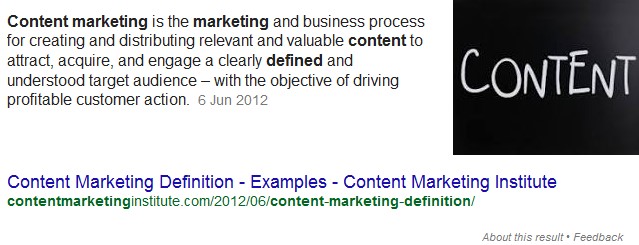In the last post we wheeled out that Matt Cutts quote about links.
The former Head of Web Spam at Google told us that:
“The objective is not to ‘make your links appear natural’, the objective is that your links are natural.”
What lies behind all this talk about ‘natural’ and ‘unnatural’ links is a strong preference that Google has for ‘link earning’ over ‘link building’.
It wants you to earn your links rather than concentrate your efforts on building them.
Google wants you to keep your hands off.
(Maybe that’s why it has invested so heavily in driverless cars?)
While it is easy enough to draw a theoretical distinction between what is a ‘natural’ link and what is an ‘unnatural’ link, in practice such clear-cut distinctions start to dissolve like a sugar cube in a cup of coffee.

The link building spectrum: from link building to link earning
Let’s try and pick apart the carefully constructed barricades that have gone up to separate black link building from white link earning.
And shining through the black and the white we’ll reveal a beautiful spectrum.

Isn’t it pretty?
Here’s the unnatural links theory:
By doing or creating things that people find useful, enriching and unique (and not by copying what others do and producing pale imitations that you hope to colour by securing a few high authority links) you will earn your links.
And all of those penalties and algorithm changes usually serve just one purpose:
To try and let the democratic voice of the web have its free reign over the search pages (and to try and remove those ‘hidden hands’ that try to force their way to the top.)
Here’s the link earning result:
Building links has, perhaps unfairly, increasingly been seen as ‘a bad thing’. Earning links is what it should be all about.
And here’s the content marketing side effect:
Thanks to this the darling of the link earning age, though far from the only tactic available, is content marketing.
We’ll take a look at content marketing next, but first let’s look at a couple of ways to try and define how link building and link earning are perceived.
Typical activities and characteristics of link building and link earning
Here are activities associated with Old Nick (link building) and New Hope (link earning).
| Link building | Link earning |
| Directory Submissions | Infographics and curation site submissions |
| Link requests | Outreach/PR |
| Article site posts | White Papers |
| Guest posts | Content hubs |
| Blog comments/forums/answers | Downloadable free tools |
| Requesting links from citations | Organising events |
| Competitor link analysis | Social share analysis |
And here are the characteristics that are associated with both:
| Link building | Link earning |
| Me, me, me | You, you, you |
| Outbound | Inbound |
| Manual | Creative |
| Controlling | Democratic |
| Finding sites | Finding audiences |
| Keywords | Interests |
| Securing links | Promoting something |
Poles apart, then?
Well, that’s the hype.
But, in reality, those walls dividing the two are thinner than paper.
The great divide between link building and earning simply doesn’t exist. The two are much closer than the stereotypes and sloganeering would suggest. And, what’s more, there is still a lot of real SEO benefit left in link building. You must be crazy if you ignore it just because everyone else says that the emperor’s new clothes look fantastic.

We’ll return to this in just a moment. (But, yes, that guy is naked!)
First – we’d like to introduce you to the new kid on the block.

The name’s Marketing.
Content Marketing.
The irresistible rise of content marketing
Google Trends shows you what is currently hot – and what is not. It also shows you the history of search terms – in specific countries or worldwide – since 2004.
And both of these can be mighty useful for keyword research (that favourite activity of link builders) and for thinking about what sort of topics your audience love (that favourite activity of content marketers).
Let’s plug ‘link building’ into it and look at the volume of worldwide searches for this over the last decade or so.

- There is the search equivalent of a pecking frenzy that develops leading up to 2012.
- Then ‘link building’ as a search term rather suddenly starts to drop off the radar.
- It drifts aimlessly back down towards its 2004 search levels – and, if there is further life in the old dog, it’s going to need the best quality vegetarian dog food to restore a healthy shine to its coat.
The demise of link building as a search term coincides pretty much exactly with the appearance of an Antarctic bird on the digital shores: the Penguin update (that we detail further in the complete version of this Fast Track SEO Course).

Penguin is now part of Google’s everyday algorithm, but was first designed to tackle and address the problem of web spam (which was synonymous with some forms of manual link building).
All of a sudden link building didn’t necessarily seem like such a hot topic (or such a good idea).
So, what replaced it?

The red line here (showing the sudden rise) is the search term ‘content marketing’. It’s pitted against link building, looking suitably blue.
Admittedly this may not be the world’s best surprise ending, but that growth is pretty phenomenal.
- As link building drifts off, licking its wounds, content marketing leaps in popularity as if given a shot in the arm.
- The levels of interest in content marketing are about double what searches for link building ever achieved.
- And they look like they are going to continue rising in the near future.
- The smart money, it seems, is on content.
And we’re desperately trying to avoid saying ‘content is King’.
Drat.
Let’s be clear about one thing: content marketing is not the only way to earn links.
How about these, for starters?
- Free app/tool marketing
- Events and exhibitions
- Contests and giveaways
- Scholarships
- PR
- Participation in charity work
- Offering free services to your target market
- Offering free products to your target market
We’ll stop there, because the list is potentially endless. Nonetheless when SEO experts talk about link earning they usually mean content marketing.
What is content marketing?
The good old Knowledge Box should be able to help us here:

Thanks Google.
“Content marketing is the marketing and business process for creating and distributing relevant and valuable content to attract, acquire, and engage a clearly defined and understood target audience – with the objective of driving profitable customer action.”
To elaborate a little:
- Advertising tries to sell you something…(usually towards the end of your buying journey).
- Content marketing tries to help you/amuse you/engage you with something…(usually much earlier on in your buying journey).
With Google’s emphasis on authority, trust and earning links it is, perhaps, no surprise that content marketing received such a shot in the arm as the Penguin flapped its wings.
But are we really in a new, radically different era for SEO?
Or, have the same deck of cards just been given a little shuffle?
We’ll deal with these questions next.
The link building spectrum
Let’s indulge in a bit of iconoclasm and shatter some assumptions about link building and link earning.
Earlier on we showed how the two are often depicted as a force of evil and a force for good. (And we know from its ‘Ten things that we know to be true’ that Google ‘does no evil’.)
But, in the face of this overwhelming rhetoric, it is important to remember that the two ways to gain links are not actually opposites at all.
Link building and link earning exist on a spectrum.
When Matt Cutts said that “the objective is not to ‘make your links appear natural’, the objective is that your links are natural”, he was actually being a little disingenuous.
- There are elements of manual link building in nearly all examples of content marketing – it’s called outreach and it means the promotion of your content to influential sources.
- Similarly, the rather targeted hand of PR lies behind many links.
- And how ‘natural’ is it to promote something to your social followers – or even use paid social ads to promote it to those you don’t know – in order to secure links?
Relatively few links are purely ‘natural’ or entirely spontaneous – most involve some link building strategy.
To illustrate this we’ve created below a spectrum of ways to get links. These range from the ‘manual’ to the ‘natural’ (or from the ‘built’ to the ‘earned’).
- At one end you are very much in control of the entire process of securing a link.
The spectrum starts with web spam where links are bought, shared and stolen.
- At the other end you have relinquished control and are just creating great content.
Yet every viral video, downloaded app, talked-about White Paper or admired infographic has probably been promoted using some of the tactics identified further down the spectrum.
The spectrum of links
Journey with us from dark to angelic white as we voyage through the spectrum of ways to get links.

The Dark Side
(Manipulative links)
- Link farms
- Paid links
- Automated link building
- Injecting links
50 Shades of Dark Grey
(Manual links where you are very much in control of the process)
- Links in blog post comments
- Links in forum posts
- Creating directory listings
- Guest posts
- Scholarships
- Links in Quora answers you create
50 Shades of Lighter Grey
(Promotional seeking of links)
- Outreach
- PR
- Social media (paid ads)
- PPC
- Organising or hosting an event
- Social media activity
All Things White and Beautiful
(‘Natural’ links that are earned and increasingly out of your hands)
- Infographics posted on a curation site
- Speaking at an event
- Creating a useful app or tool
- Writing a white paper
- Creating an infographic
- Developing any killer content

What’s important here is not arguing about where each element should go on the spectrum – so let’s not go there!
Nor is it the point to wonder why such and such wasn’t included – so let’s put a halt to that.
What’s important is to grasp the fact that all successful content will need some element of link building tactics.
And you overlook this at your peril.

All the previous posts in this series can be found here.
For the complete version of this Fast track SEO course head over to Amazon.
It’s yours for less than a fiver!
